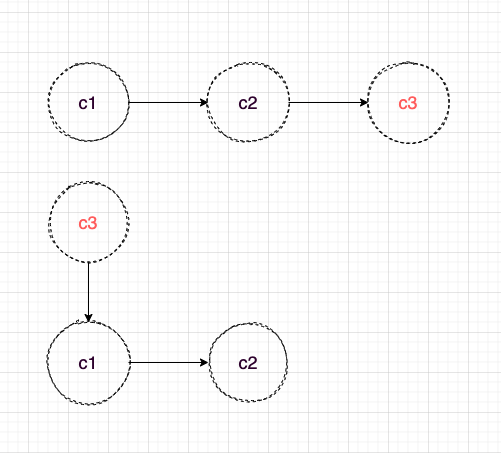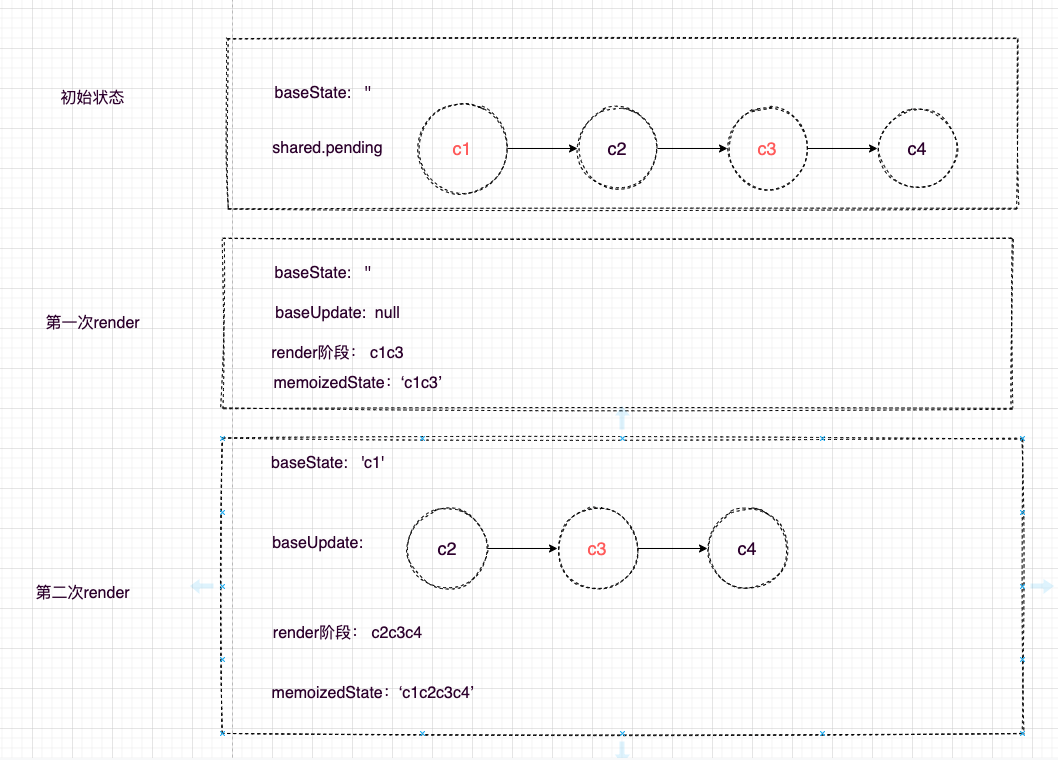人人都能读懂的react源码解析(大厂高薪必备)
5.state更新流程(setState里到底发生了什么)
视频课程&调试demos
视频课程的目的是为了快速掌握react源码运行的过程和react中的scheduler、reconciler、renderer、fiber等,并且详细debug源码和分析,过程更清晰。
视频课程:进入课程
demos:demo
课程结构:
- 开篇(听说你还在艰难的啃react源码)
- react心智模型(来来来,让大脑有react思维吧)
- Fiber(我是在内存中的dom)
- 从legacy或concurrent开始(从入口开始,然后让我们奔向未来)
- state更新流程(setState里到底发生了什么)
- render阶段(厉害了,我有创建Fiber的技能)
- commit阶段(听说renderer帮我们打好标记了,映射真实节点吧)
- diff算法(妈妈再也不担心我的diff面试了)
- hooks源码(想知道Function Component是怎样保存状态的嘛)
- scheduler&lane模型(来看看任务是暂停、继续和插队的)
- concurrent mode(并发模式是什么样的)
- 手写迷你react(短小精悍就是我)
上一节我们介绍了react两种模式的入口函数到render阶段的调用过程,也就是mount首次渲染的流程,这节我们介绍在更新状态之后到render阶段的流程。
在react中触发状态更新的几种方式:
-
ReactDOM.render
-
this.setState
-
this.forceUpdate
-
useState
-
useReducer
我们重点看下重点看下this.setState和this.forceUpdate,hook在第11章讲
1.this.setState内调用this.updater.enqueueSetState
Component.prototype.setState = function (partialState, callback) { if (!(typeof partialState === 'object' || typeof partialState === 'function' || partialState == null)) { { throw Error( "setState(...): takes an object of state variables to update or a function which returns an object of state variables." ); } } this.updater.enqueueSetState(this, partialState, callback, 'setState'); };2.this.forceUpdate和this.setState一样,只是会让tag赋值ForceUpdate
enqueueForceUpdate(inst, callback) { const fiber = getInstance(inst); const eventTime = requestEventTime(); const suspenseConfig = requestCurrentSuspenseConfig(); const lane = requestUpdateLane(fiber, suspenseConfig); const update = createUpdate(eventTime, lane, suspenseConfig); //tag赋值ForceUpdate update.tag = ForceUpdate; if (callback !== undefined && callback !== null) { update.callback = callback; } enqueueUpdate(fiber, update); scheduleUpdateOnFiber(fiber, lane, eventTime); }, }; 如果标记ForceUpdate,render阶段组件更新会根据checkHasForceUpdateAfterProcessing,和checkShouldComponentUpdate来判断,如果Update的tag是ForceUpdate,则checkHasForceUpdateAfterProcessing为true,当组件是PureComponent时,checkShouldComponentUpdate会浅比较state和props,所以当使用this.forceUpdate一定会更新
const shouldUpdate = checkHasForceUpdateAfterProcessing() || checkShouldComponentUpdate( workInProgress, ctor, oldProps, newProps, oldState, newState, nextContext, );3.enqueueForceUpdate之后会经历创建update,调度update等过程,接下来就来讲这些过程
enqueueSetState(inst, payload, callback) { const fiber = getInstance(inst);//fiber实例 const eventTime = requestEventTime(); const suspenseConfig = requestCurrentSuspenseConfig(); const lane = requestUpdateLane(fiber, suspenseConfig);//优先级 const update = createUpdate(eventTime, lane, suspenseConfig);//创建update update.payload = payload; if (callback !== undefined && callback !== null) { //赋值回调 update.callback = callback; } enqueueUpdate(fiber, update);//update加入updateQueue scheduleUpdateOnFiber(fiber, lane, eventTime);//调度update }状态更新整体流程

创建Update
HostRoot或者ClassComponent触发更新后,会在函数createUpdate中创建update,并在后面的render阶段的beginWork中计算Update。FunctionComponent对应的Update在第11章讲,它和HostRoot或者ClassComponent的Update结构有些不一样
export function createUpdate(eventTime: number, lane: Lane): Update<*> {//创建update const update: Update<*> = { eventTime, lane, tag: UpdateState, payload: null, callback: null, next: null, }; return update; }我们主要关注这些参数:
-
lane:优先级(第12章讲)
-
tag:更新的类型,例如UpdateState、ReplaceState
-
payload:ClassComponent的payload是setState第一个参数,HostRoot的payload是ReactDOM.render的第一个参数
-
callback:setState的第二个参数
-
next:连接下一个Update形成一个链表,例如同时触发多个setState时会形成多个Update,然后用next 连接
updateQueue:
对于HostRoot或者ClassComponent会在mount的时候使用initializeUpdateQueue创建updateQueue,然后将updateQueue挂载到fiber节点上
export function initializeUpdateQueue<State>(fiber: Fiber): void { const queue: UpdateQueue<State> = { baseState: fiber.memoizedState, firstBaseUpdate: null, lastBaseUpdate: null, shared: { pending: null, }, effects: null, }; fiber.updateQueue = queue; } -
-
baseState:初始state,后面会基于这个state,根据Update计算新的state
- firstBaseUpdate、lastBaseUpdate:Update形成的链表的头和尾
- shared.pending:新产生的update会以单向环状链表保存在shared.pending上,计算state的时候会剪开这个环状链表,并且链接在lastBaseUpdate后
- effects:calback不为null的update
从fiber节点向上遍历到rootFiber
在markUpdateLaneFromFiberToRoot函数中会从触发更新的节点开始向上遍历到rootFiber,遍历的过程会处理节点的优先级(第12章讲)
function markUpdateLaneFromFiberToRoot( sourceFiber: Fiber, lane: Lane, ): FiberRoot | null { sourceFiber.lanes = mergeLanes(sourceFiber.lanes, lane); let alternate = sourceFiber.alternate; if (alternate !== null) { alternate.lanes = mergeLanes(alternate.lanes, lane); } let node = sourceFiber; let parent = sourceFiber.return; while (parent !== null) {//从触发更新的节点开始向上遍历到rootFiber parent.childLanes = mergeLanes(parent.childLanes, lane);//合并childLanes优先级 alternate = parent.alternate; if (alternate !== null) { alternate.childLanes = mergeLanes(alternate.childLanes, lane); } else { } node = parent; parent = parent.return; } if (node.tag === HostRoot) { const root: FiberRoot = node.stateNode; return root; } else { return null; } }
调度
在ensureRootIsScheduled中,scheduleCallback会以一个优先级调度render阶段的开始函数performSyncWorkOnRoot或者performConcurrentWorkOnRoot
if (newCallbackPriority === SyncLanePriority) {
// 任务已经过期,需要同步执行render阶段
newCallbackNode = scheduleSyncCallback(
performSyncWorkOnRoot.bind(null, root)
);
} else {
// 根据任务优先级异步执行render阶段
var schedulerPriorityLevel = lanePriorityToSchedulerPriority(
newCallbackPriority
);
newCallbackNode = scheduleCallback(
schedulerPriorityLevel,
performConcurrentWorkOnRoot.bind(null, root)
);
}
状态更新
classComponent状态计算发生在processUpdateQueue函数中,涉及很多链表操作,看图更加直白
-
初始时fiber.updateQueue单链表上有firstBaseUpdate(update1)和lastBaseUpdate(update2),以next连接
-
fiber.updateQueue.shared环状链表上有update3和update4,以next连接互相连接
-
计算state时,先将fiber.updateQueue.shared环状链表‘剪开’,形成单链表,连接在fiber.updateQueue后面形成baseUpdate
-
然后遍历按这条链表,根据baseState计算出memoizedState

带优先级的状态更新
类似git提交,这里的c3意味着高优先级的任务,比如用户出发的事件,数据请求,同步执行的代码等。
-
通过ReactDOM.render创建的应用没有优先级的概念,类比git提交,相当于先commit,然后提交c3

-
在concurrent模式下,类似git rebase,先暂存之前的代码,在master上开发,然后rebase到之前的分支上
优先级是由Scheduler来调度的,这里我们只关心状态计算时的优先级排序,也就是在函数processUpdateQueue中发生的计算,例如初始时有c1-c4四个update,其中c1和c3为高优先级
-
在第一次render的时候,低优先级的update会跳过,所以只有c1和c3加入状态的计算
-
在第二次render的时候,会以第一次中跳过的update(c2)之前的update(c1)作为baseState,跳过的update和之后的update(c2,c3,c4)作为baseUpdate重新计算
在在concurrent模式下,componentWillMount可能会执行多次,变现和之前的版本不一致
注意,fiber.updateQueue.shared会同时存在于workInprogress Fiber和current Fiber,目的是为了防止高优先级打断正在进行的计算而导致状态丢失,这段代码也是发生在processUpdateQueue中
-
